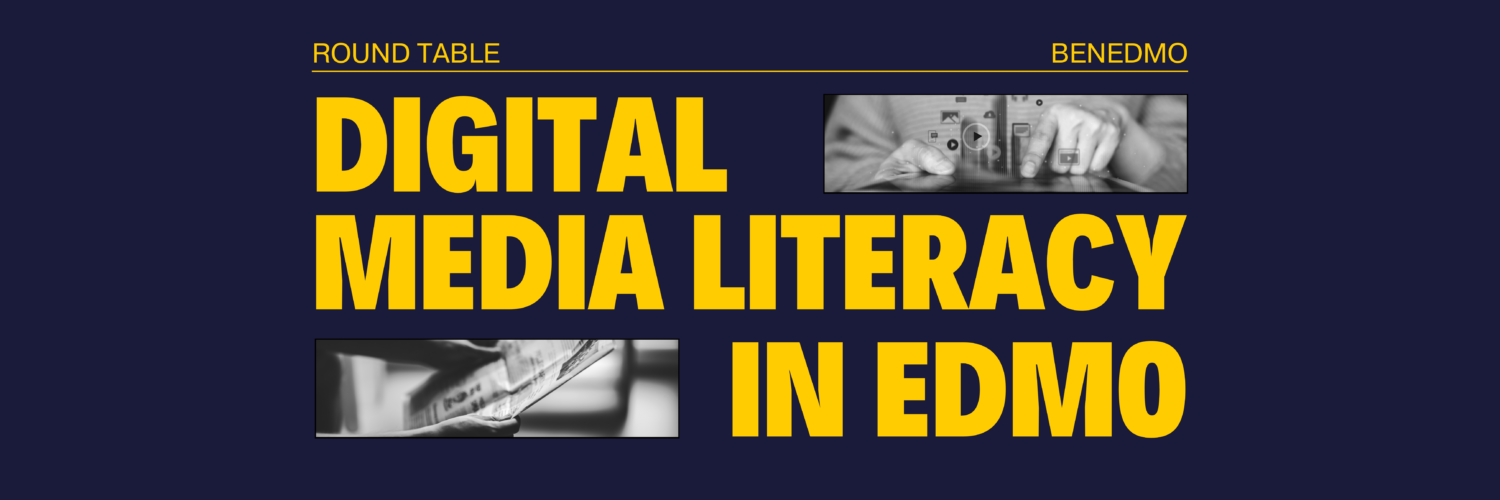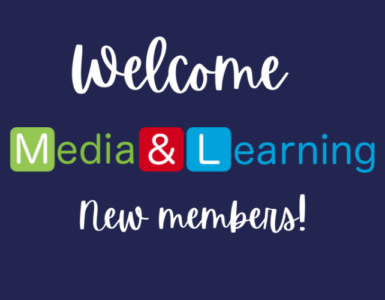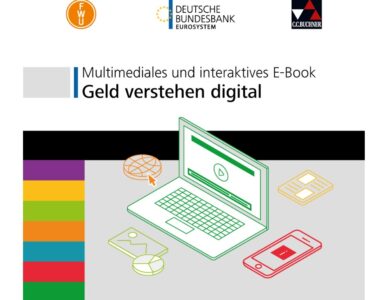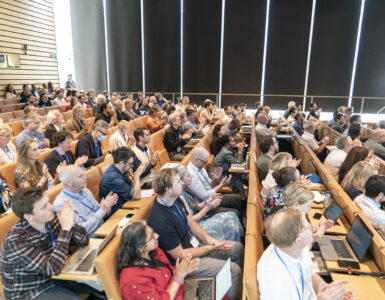This interview is part of the ”Digital Media Literacy in EDMO Round Table’‘ interview series that is published every month to highlight the work of the 14 EDMO hubs.
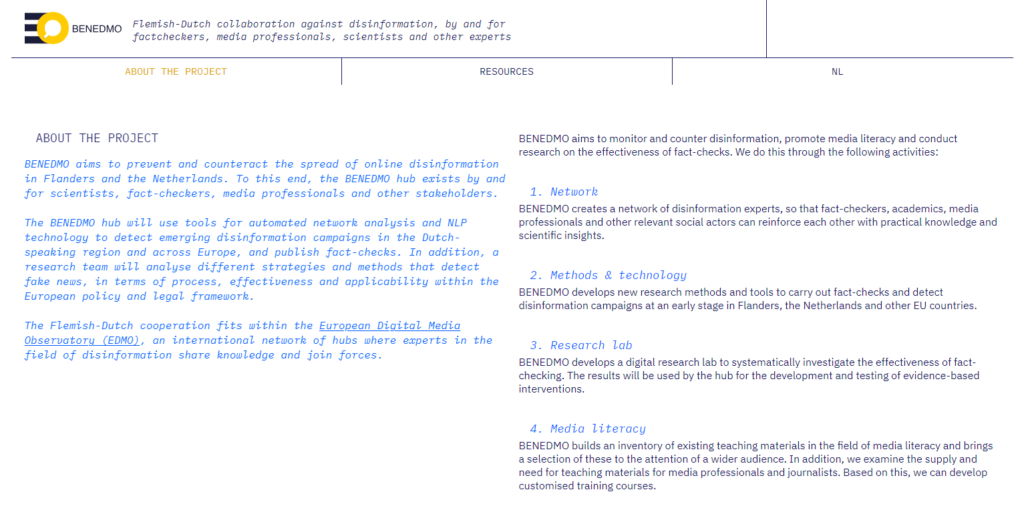
BENEDMO, Anne Bothmer & Julia Conemans, The Netherlands Institute for Sound and Vision, The Netherlands.
*This interview focuses solely on the Netherlands for more information on the Belgium (Flanders) media literacy landscape and activities, see previous published interview: Digital Media Literacy in EDMO Round Table: BELUX.
Who are the leading players in the BENEDMO region when it comes to promoting media literacy?
There are several organisations working on media literacy in the Netherlands. Five key players together form the steering group of the network organisation ‘Netwerk Mediawijsheid’, whose goal is to work towards a future where everyone is – or is well on their way towards becoming – media literate. Through knowledge sharing and cooperation the network members can tackle important ‘media literacy themes in an easier, faster, and more creative way’. The initative was established by the Ministry of Education, Culture, and Science in 2008.
Each of the five core partners has its own focus and way of working around media- and news literacy, which we will explain here:
- The Netherlands Institute for Sound & Vision is the national institute for media culture in the Netherlands, managing a large digitalized media archive and, among other goals, aiming to create a more media-literate society. The institute has one recently renewed interactive museum about the role of media in society and one museum about journalism. Its education department provides a range of workshops, training courses, and materials for children, students, and teachers who want to be at the forefront of media- and news literacy and (online) citizenship.
- ECP is a platform where government, science, business, education, and social organisations collaborate and it stimulates knowledge exchange about responsible design of digital society.
- HUMAN is a public broadcaster (part of the NPO). Besides the content produced for television and online, they provide free videos and materials on their website, coördinated by their educational department. In collaboration with Sound & Vision, HUMAN offers the masterclass ‘Medialogica’, where pupils and students learn to unravel the mechanisms behind major media events.
- The KB is the National Library of the Netherlands. The organisation brings research, reading discovery, and lifelong learning within reach of everyone in the Netherlands. Promoting digital inclusion is one of their main goals.
- Kennisnet ensures that technology is used to improve the quality and accessibility of education and to control security and ICT risks.
As well as supporting its members in their activities, Netwerk Mediawijsheid produces activities such as MediaMasters, a serious game that aims to teach 10-12-year-old children media literacy skills, and resources such as Isdatechtzo.nl, which aims to help visitors learn how to identify false news. It also organizes an annual Dutch Media Literacy Week which aims to draw attention to critical, instructive, and positive media use.
In addition to HUMAN as a network partner, there are other broadcasters within the NLPO that also produce programs and materials that aim to make people more media literate. An example is Pointer, the investigative journalism platform of KRO-NCRV which has the website ‘Pointer Checkt’. On this webpage, you can find various videos in which they search for facts and scientific proof for content you see online. Another example is Nieuwsuur, a television program of NTR and NOS, which produces the online video series ‘#Ophef‘ with journalist Rudy Bouma. In each video, Bouma explains the world behind disinformation and conspiracy theories.
Other organisations that deserve mentioning are DROG and TILT. DROG is a business creating strategies in order to tackle disinformation. Based on the latest disinformation tactics and manipulation strategies, TILT creates tools and games to make people resilient against disinformation. TILT and DROG together made some serious games, like the ‘Bad News Game’, ‘Harmony Square’ and, ‘GO VIRAL!’. Other media literacy initiatives that are worth mentioning include ‘Use the News’ and ‘DichterBijNieuws’. ‘Use the News’ is an initiative, financed by ANP, whose mission is to make young people news literate. Therefore the initiative works with media, young people, teachers, and scientists. DichterBijNieuws strives for more awareness of the freedom of the press and press safety through campaigns, training sessions, dialogue, and educational materials.
Do you have any idea as to how media-literate people in this region are generally? Are there any types of measures that can be used to assess this over time?
Several studies have been conducted in the Netherlands, as well as in a European context, where the Dutch level of media literacy has been measured. An important side note regarding these studies is that these are indicators for media literacy, but that it takes more individual measurements (such as competencies, skills, and attitudes) over time before jumping to general conclusions.
Regarding the Media Literacy Index 2022, created by the Open Society Institute-Sofia, out of the 41 participating countries, The Netherlands ranks 8th. The index assesses the resilience potential to fake news, using indicators for media freedom, education, and trust in people.
The Reuters News Report 2023 states that about 76% of the Dutch population is consuming news online. According to the Digital Agenda Data, the Netherlands has the highest level of internet user skills in the EU in 2022. Research conducted by the CBS (Centraal Bureau voor de Statistiek) found that nearly 80% of the Dutch population share at least basic digital skills (such as “sending and receiving emails, making internet phone calls, participating in social networks and expressing opinions on social or political issues online”) and 52% of the population even leads in above basic skills (such as “searching information online, reading news sites and identifying fake news”).
Some research connects this media consumption of Dutch inhabitants with the extent to which they are resilient against disinformation. In 2018, the Rathenau Instituut, published a report stating that the Dutch are less susceptible to disinformation because of their diverse news consumption (both online and offline) and their high level of trust in the news media. A report from the Commissariaat voor de Media from 2019 shows that the level of trust somewhat decreased, but is still relatively high. Also, dutch people continue to broadly orient themselves to news, depending on age categories. More research about the resilience of the Dutch consumer against disinformation is needed. Such research should not only include the ability to distinguish between the real and the fake, but also measure an understanding of the underlying mechanisms and manipulation techniques, as well as an awareness of algorithms and knowledge of journalistic processes.
What are the main challenges you face in promoting media literacy in the Netherlands?
For years there has been debate about introducing digital literacy in the curriculum of primary and secondary education. The Dutch government has assigned a working group to develop learning goals for digital literacy, which is currently in progress. Media literacy will be part of the scope. The goal is to start implementing these goals in several – but not all- schools in the upcoming two years. Only in 2025 will the law be amended based on the outcomes of these pilots.
The main challenge therefore is the fact that the Dutch school system is currently lacking a structured approach to digital- including media literacy. However, as society has changed in regards to the spread of and access to information, teachers will find themselves confronted with the topic of media and digital literacy in their day to day practice. Therefore many schools have taken the initiative to implement it on their own account. It is a challenge for schools and teachers to independently gain knowledge on digital literacy, select topics and competencies related to digital media literacy and implement it in an already full curriculum. Kennisnet has been a partner to guide schools in this process. They are currently working on launching a central point for information and their handbook on digital literacy offers guidance.
What value do you think EDMO and the network of EDMO hubs in particular bring to the challenge of fighting disinformation and promoting media literacy in this region?
Through the EDMO network, the BENEDMO team has gained many insights, inspiration and connections. EDMO has cultivated an infrastructure for knowledge exchange that is very valuable to us. A few examples: It has been insightful to hear about the experiences of media literacy professionals that are working in crisis situations, in a heavily polarised information landscape, for example in the countries bordering Ukraine. It reaffirms the relevance of media literacy work, and additionally their experiences can be used as an example for other crisis situations.
Another example is the experiences in increasing the impact of media literacy efforts by letting youngsters engage with other kids through social media (with a meaningful selfie wall, and workshops for making and posting explainer video’s) which has brought inspiration for our own future workshops and events. Some hubs have fruitful collaborations with influencers which has sparked our interest as well. Learning about the challenges and benefits that they have encountered, helps us in the exploration of potential collaborations.
The EDMO network seems very passionate about raising the overall standard of media literacy interventions. For example, by sharing effective assessment methods. We are also excited to explore the potential of collaboratively creating a broad framework for the development of media literacy resources together, to contribute to the overall quality of these types of resources.
What types of media literacy activities have been organised by BENEDMO since it was set up?
The BENEDMO media literacy activities are aimed at both media professionals and the general public. The activities focus on offering training sessions and contributing to public events, developing and sharing resources, and publishing reports on media literacy needs and resources.
In regard to media professionals, the Institute for Sound and Vision works with consortium partners KU Leuven and Bellingcat. Within training courses and materials, media professionals gain skills and knowledge to recognize disinformation, learn how to effectively report on disinformation, and reflect on their role. BENEDMO conducted an inventory of the knowledge, skills, and educational resources within journalism schools, media organisations, and trade associations to support media professionals to deal with manipulated information, which can be found here on the BENEDMO website. Based on this inventory, BENEDMO keeps refining and developing its resources. BENEDMO offers training sessions with different focus areas, for example, verification techniques, methods to monitor (alternative) social media platforms, or information on how to reach audiences in a non-polarizing way.
For activities aimed at the general public, ‘Sound and Vision’ collaborates with associate partners Netwerk Mediawijsheid (The Netherlands) and Mediawijs (Belgium, Flanders). One of the activities focuses on publishing good practices on the BENEDMO website with ready-to-use materials for children, students, teachers, and adults which will be published online soon. The consortium organised and participated in several public debates on disinformation.
Another project that BENEDMO contributed to by collaboration on a media literacy register, is RETINA, a tool to help librarians find resources to educate their audiences on disinformation. The tool was launched in the summer of 2023.
What plans do you have in relation to media literacy for the next 12 months for BENEDMO?
We will continue doing what is described under the last question and additionally, in the next months of BENEDMO, the project focuses on the following:
- Update and expand the media literacy register (with news literacy-related resources) and add new ready-to-use materials to the website.
- Upload a report with recommendations for new resources based on an analysis of available media literacy materials and the vulnerability and needs of its users.
- Professionalisation and update of a proven work method which will be used in workshops about disinformation offered by Sound & Vision and BENEDMO.
- Give students and journalism professionals an overview of useful tools by creating a simplified version of the Bellingcat toolkit
- Give professionals an easy overview of academic research results related to their fact-check activities.
- Adjust our training to the context of local journalists with a focus on verification techniques, disinformation, and the role of local journalists in contributing to people’s level of media literacy and offer this training to local journalists.
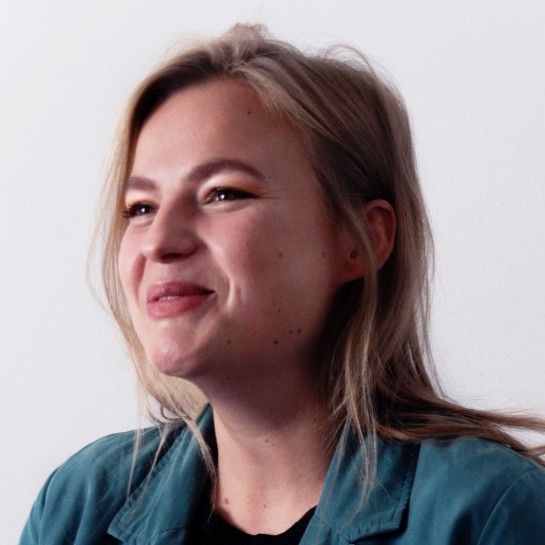
Anne Bothmer, Education and Media Literacy projects, The Netherlands Institute for Sound and Vision, The Netherlands

Julia Conemans, Programme Manager BENEDMO, The Netherlands Institute for Sound and Vision, The Netherlands

